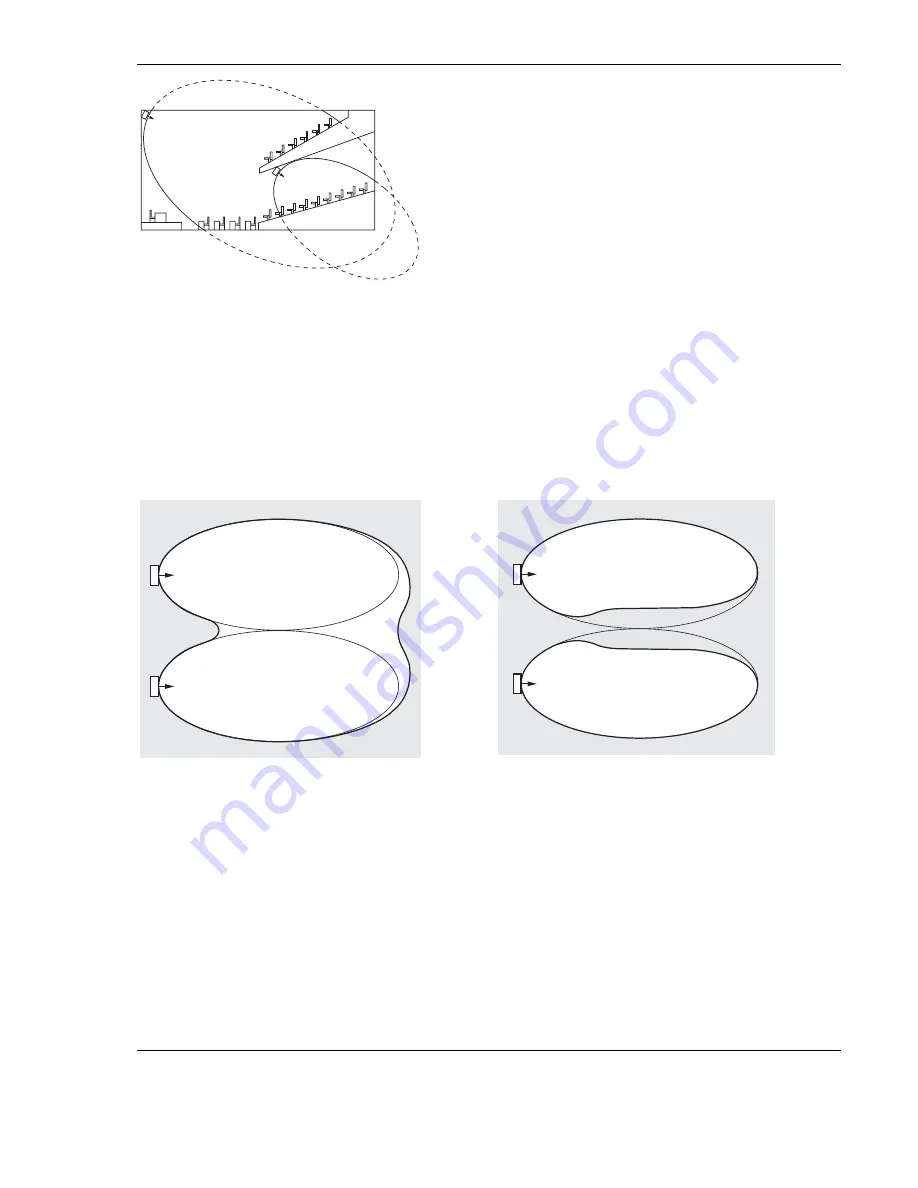
INTEGRUS | Digital Infra-red Language Distribution System
en |
13
BOSCH Security Systems | February 2003
Figure 1.17 Radiator for covering seats beneath a balcony
1.3.6 Overlapping footprints and multipath effects
When the footprints of two radiators partly overlap, the total coverage area can be larger than the sum of the two separate
footprints. In the overlap area the signal radiation power of two radiators are added, which increases the area where the
radiation intensity is larger than the required intensity.
However, differences in the delays of the signals picked up by the receiver from two or more radiators can result in that the
signals cancel each other out (multi path effect). In worst-case situations this can lead to a loss of reception at such positions
(black spots).
Figure 1.18 and Figure 1.19 illustrate the effect of overlapping footprints and differences in signal delays.
Figure 1.18 Increased coverage area caused by added radiation
power
Figure 1.19 Reduced coverage area caused by differences in cable
signal delay
The lower the carrier frequency, the less susceptible the receiver is for differences in signal delays. The signal delays can be
compensated by using the delay compensation switches on the radiators (see section 1.5).
1.4 Planning an Integrus infra-red radiation system
1.4.1 Rectangular
footprints
Determining the optimal number of infra-red radiators required to give 100% coverage of a hall can normally only be done by
performing a site test. However, a good estimation can be made by using ‘guaranteed rectangular footprints’. Figure 1.20 and
Figure 1.21 show what is meant by a rectangular footprint. As can be seen, the rectangular footprint is smaller than the total
footprint. Note that in Figure 1.21 the ‘offset’ X is negative because the radiator is actually mounted beyond the horizontal
point at which the rectangular footprint starts.




























